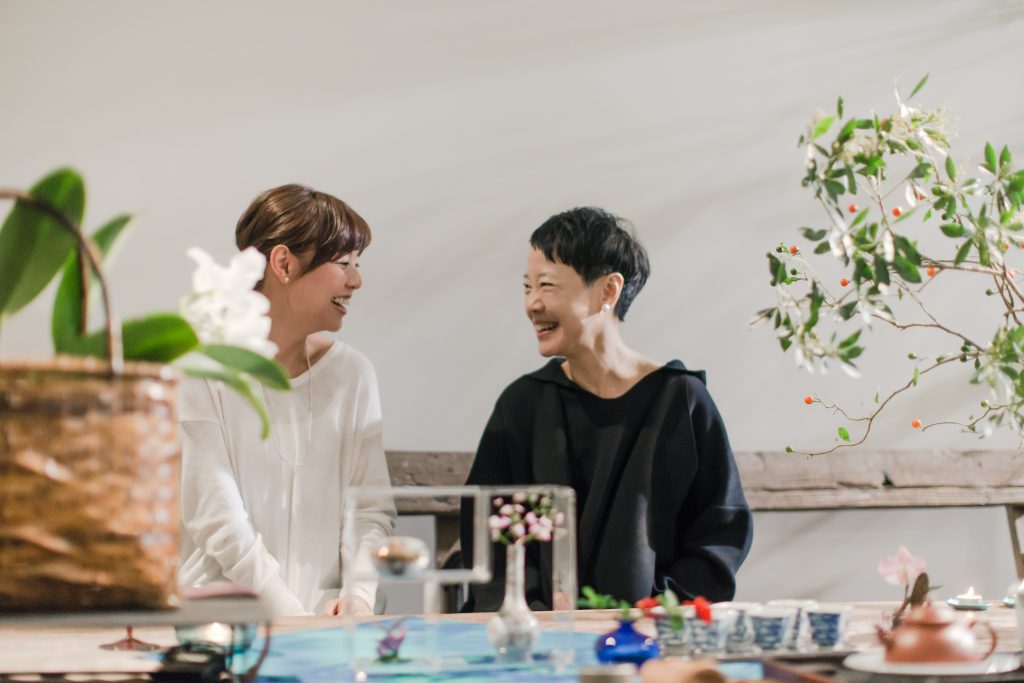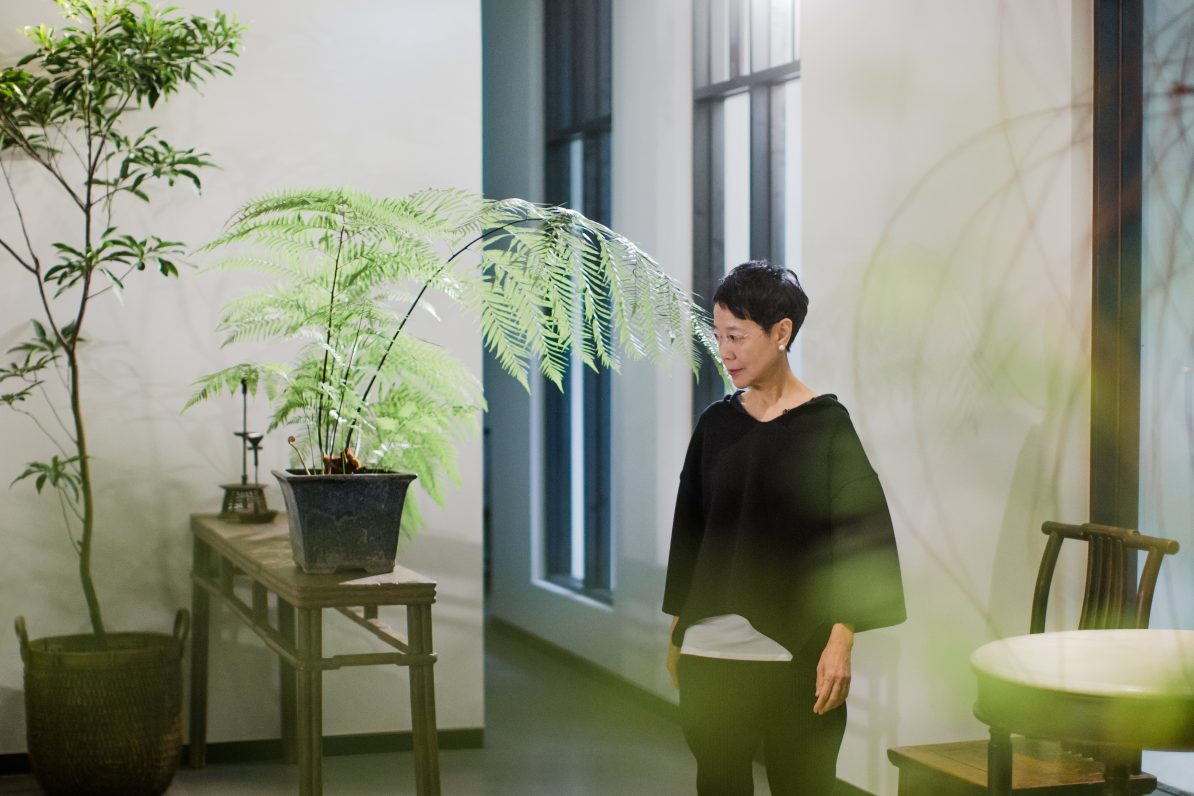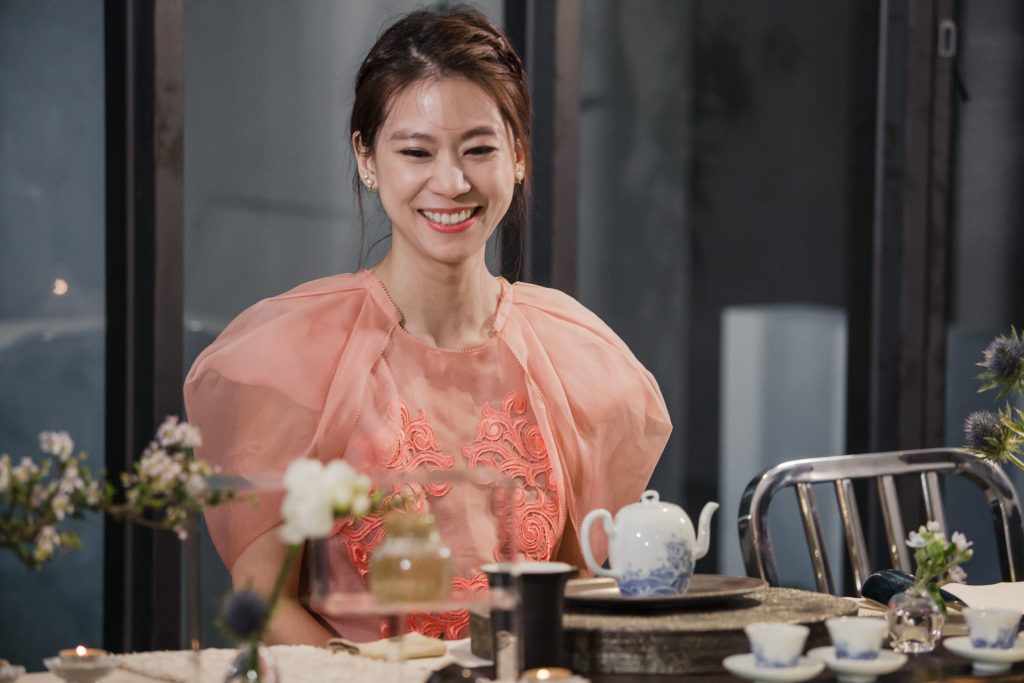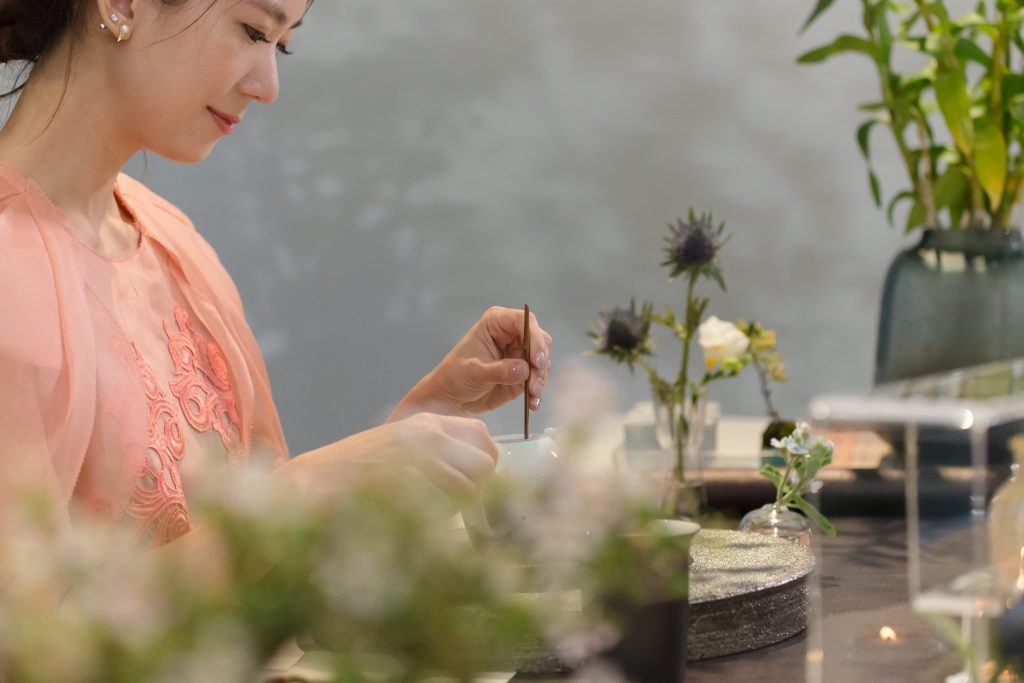In Taiwan, we drink tea almost daily. There are tea stands at every corner, and various intricately designed tea houses in alleyways. Yet, we knew so little about tea. Many are willing to invest their time brewing coffee, while being put off by the idyllic of Chinese tea ceremony originated from our own culture. Some tea lovers enjoy a fresh brew of tea, but don’t know more about the uniqueness of Taiwan Oolong.
Almost an urban legend, there is a torchbearer of the Chinese “Way of Tea” and its aesthetics, who has been guiding a group of tea enthusiasts-turned-connoisseurs for decades. Through rigorous and prolonged learning in pouring and savoring tea, her students have built up a sense of style and resplendency in life by playing the role of a tea host that is both distinctive and personal at heart.
Written by Kat Leung / Photographs by Hailing Wang / Translated by Francis Lee
We visited Master Xie Zhi Zheng at Qing Xiang Zai The II, situated on Hangzhou S. Rd. This beautiful establishment converted from an old Taiwan Power Company dormitory seemed even more serene in the drizzle. The wash of greenery upon entry transports visitors and urges them to leave the world behind at the door. Master Xie oversees the space to remain minimalistic in embellishment and maximum in natural light through floor-to-ceiling windows all around, so tea can be savored in tranquility through ceremonies.
Master Xie is accompanied by three of her students, who are our tea hosts of the day. Through their individual tea settings, each extraordinary and exceptional, they share with us their primal drive and transformation on the passage of tea.
Tea Host-Leung Juan
Tea, Beyond Its Brew
Many people shy away from learning about the way of tea because they thought it is prudish and complicated. On the contrary, many of Master Xie’s students stumbled into the world of Taiwanese tea without any preconception, and gained much self-fulfillment.
Leung Juan, who has been Master Xie’s student for thirteen years, remembers vividly her first encounter with the elegant tea master. It was through an interview from a book introducing Taiwanese Oolong tea at her Japanese language teacher, who was also a student of Master Xie, that got her hooked. In wine tasting and coffee brewing, terriors and origins are often valued most. However, in the realm of Master Xie’s tea, Leung Juan is able to learn in more contexts, beyond just the flavor of tea.
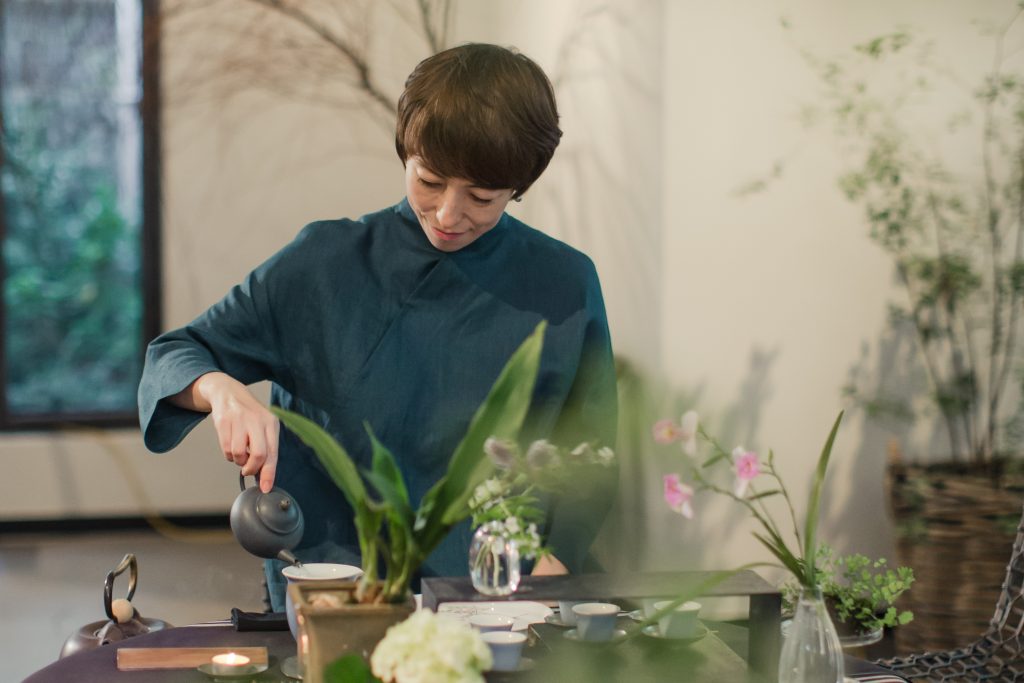
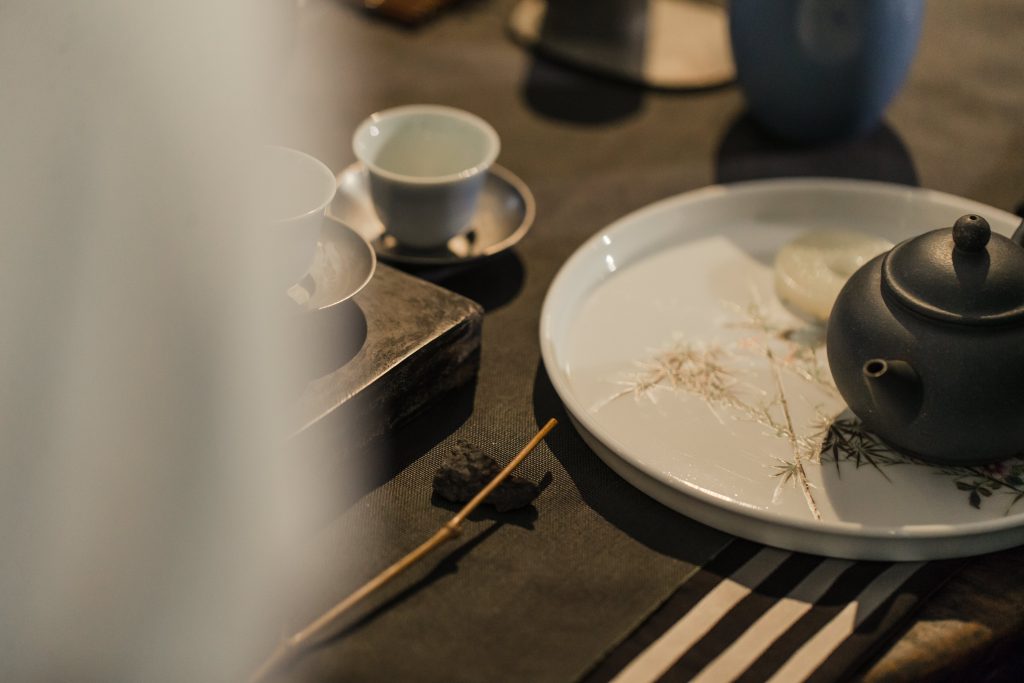
The Intricacies Between Spontaneity and Relaxation
Bright and outspoken, Leung Juan’s tea setting in black and white stripes complements her choice of elegant blue tea wares, mirroring her personality completely. “Since I started studying tea, I realize there are many point of views, just like how objects interlink in our tea ceremony. The relationship between my pot and I, that of pot and tea pitcher, or with teacups. Of course there is also the overall layout of the tea ceremony to consider. Tea made her self-awareness higher, and she has been able to reassess her relationship between work, kids, and family better. Practicing tea has given her new perspectives in life, which is a leap from habits of speaking too bluntly. “I am more considerate with a conscious mind if you will, and learned to be more expressive when hanging out with others. I would say this is my biggest change since learning tea.”
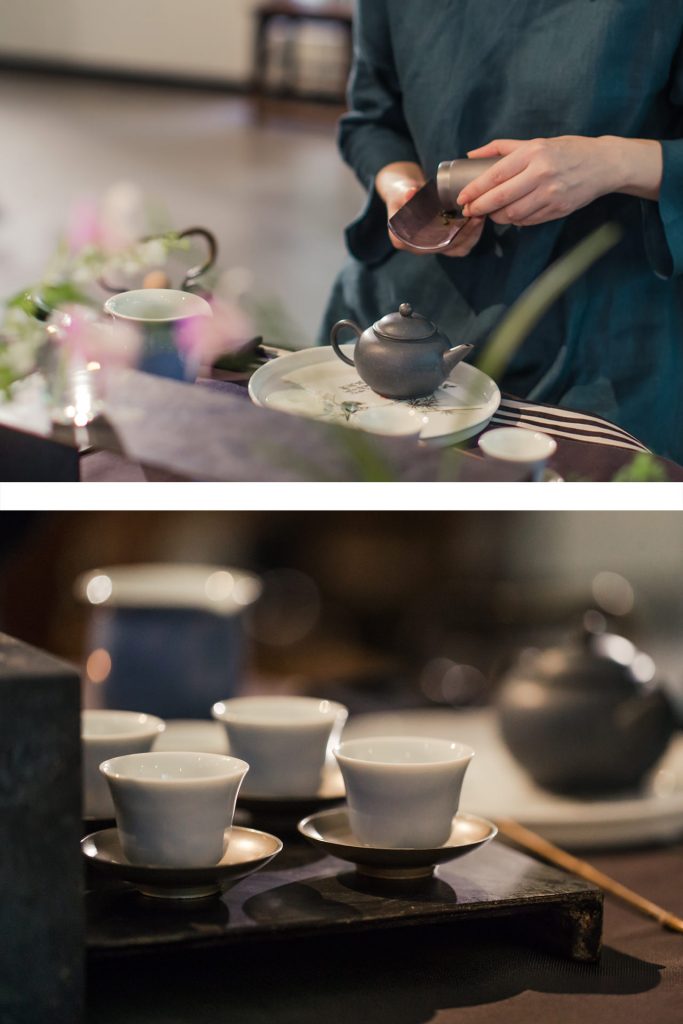


Tea Host-Lee Wan Hsuan (Francis)
Sculpting Her Own Aesthetic Landscape Through Tea Ceremony
It is hard to guess from her stylish and exquisite appearance, that Francis, who grew up abroad with a passion for creativity and design, has been practicing tea for twelve years. She remembers vividly her first encounter with Master Xie at the expo hosted by Department of Cultural Affairs in 2006, and how she was drawn deeply toward the minimalistic yet theatrical temperament instantly. “It tipped my scale of impression for tea.” Since then, she has embarked on the journey of tea learning, and discovered art and creation through practices of tea.
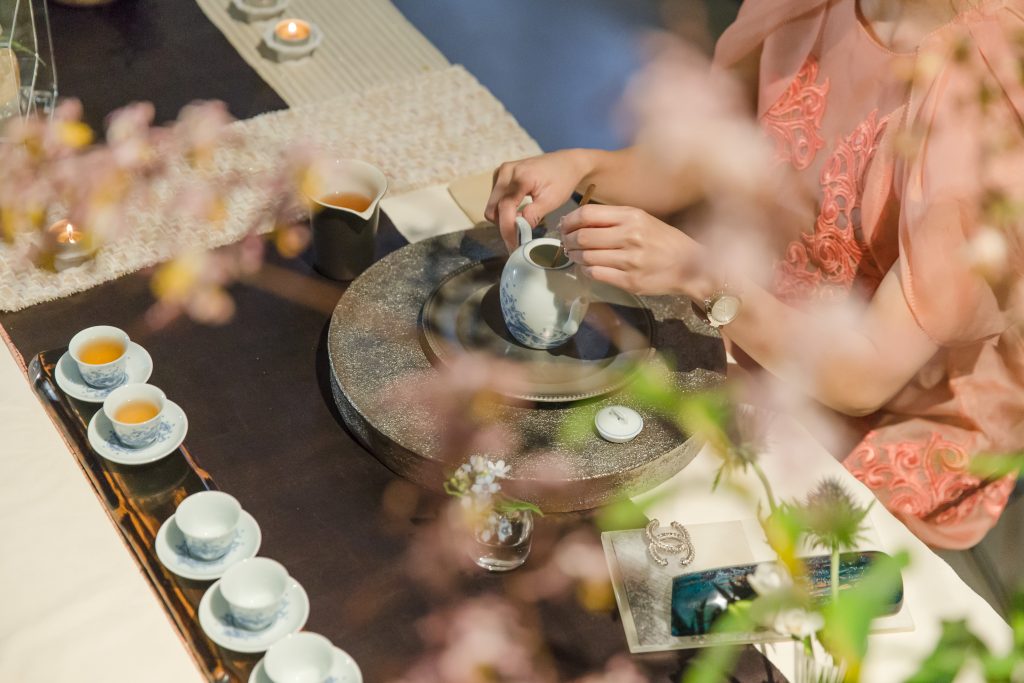
Unconventional Creativity –
Breaking The Mold of Traditional Oriental Impression
The tea setting that Francis did on the day of the interview was inspired by her trip to Paris during summer vacation. By employing classic Chanel tweed on the table, she pays tribute to Mademoiselle Coco and invites guests to the imagination of how she might brew tea.
“I’ve learned to incorporate different styles to create a ‘mis en scene’ over the years; take the European fabrics, Taiwanese ceramic works and Japanese creations for example, there is also something old, something new.” By breaking the mold of traditional elements from the orient and marrying modern creation, she fell in love with this creative process through putting together tea settings. Although many would say “just take it easy with tea,’ but to Francis, brewing tea is in the realm of art. Her tea settings are prepared extensively through thorough creative process with tremendous time and efforts spent behind the scene.” Hence to her, the world of tea is placed above daily life, where her imagination runs wild.
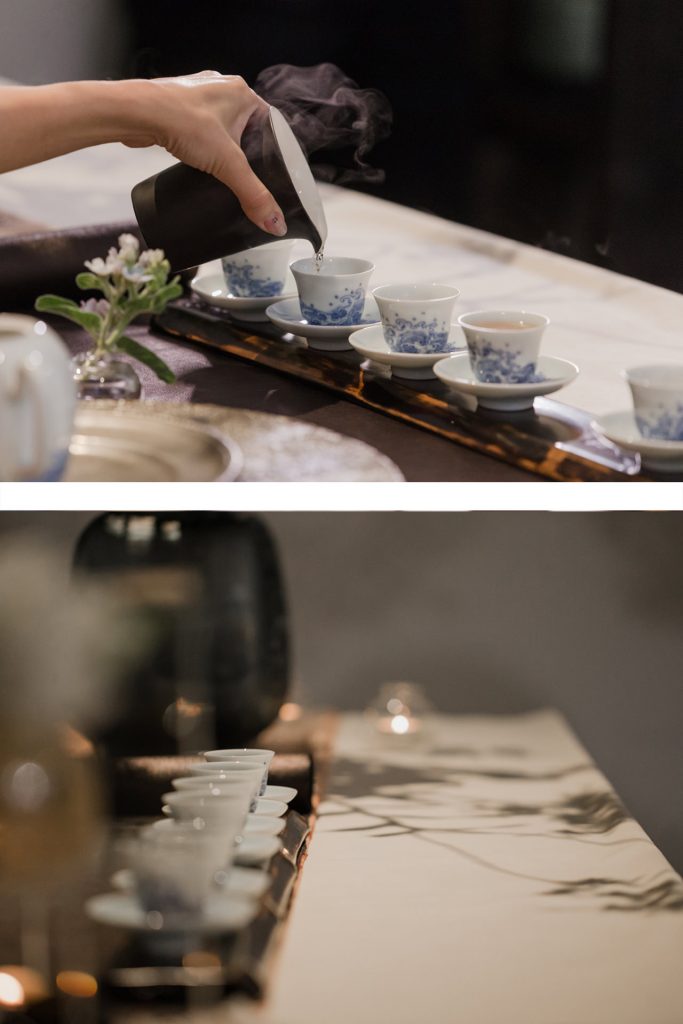

Tea Host-Chiu Wei Hsuan
Tea As A Way To Express My Inner World
Chiu Wei Hsuan (Wei Wei) has been learning tea with Master Xie since junior high, as she remembers, it all started with a beautifully framed window. “I used to pass by Qing Xiang Zai with my mother, and was often attracted by the floral arrangement by the window. We would stand across the road to appreciate it for awhile, and that had always brought me peace and tranquility throughout the day.” Soon after, Wei Wei had been following her mother’s footstep and became a pupil of Master Xie. “Master Xie has always encouraged us to share our preferences and thoughts. Even though I was the youngest, I felt that she values our ideas equally.” And so, Wei Wei had developed an unique perspective in tea for the last twenty years. From appreciating works of legendary ceramicist Tsai Xiao Fang since his early years, to learning about proportions, layerings and color coordinates, up until incorporating flowers and plants into the tea ceremony, she is now able to mix match objects from around the world freely.


Rediscovering the Beauties of Oriental Culture
Wei Wei brought in a palette of autumn colors to her tea setting that day with flowers in warm hues. “Master always said that teawares are inanimate, so there should always be fresh flowers on the tea table as they bring a sense of liveliness and tells the tale of the season . Their textures and colors enrich the tea setting with teawares. I don’t think I would be able to develop such a sense of aesthetics in traditional schooling, nor had I not learn the way of tea. Now I am able to appreciate and distinguish tea, and the beauty of it. Overtime, I know my preferences better, and am able to articulate the reasons behind them clearly now.” Because of tea, she also had a chance to learn about floral arrangement, Chinese calligraphy, and traditional garden landscaping through touring with Master Xie, hence rationalizing Oriental aesthetics and culture through more perspective and ideologies.
“The premeditated blank spaces in ink calligraphy and its brushstrokes have much to do with tea setting. When setting up a ceremony, we all benefit from nutrients of Eastern art and culture.”
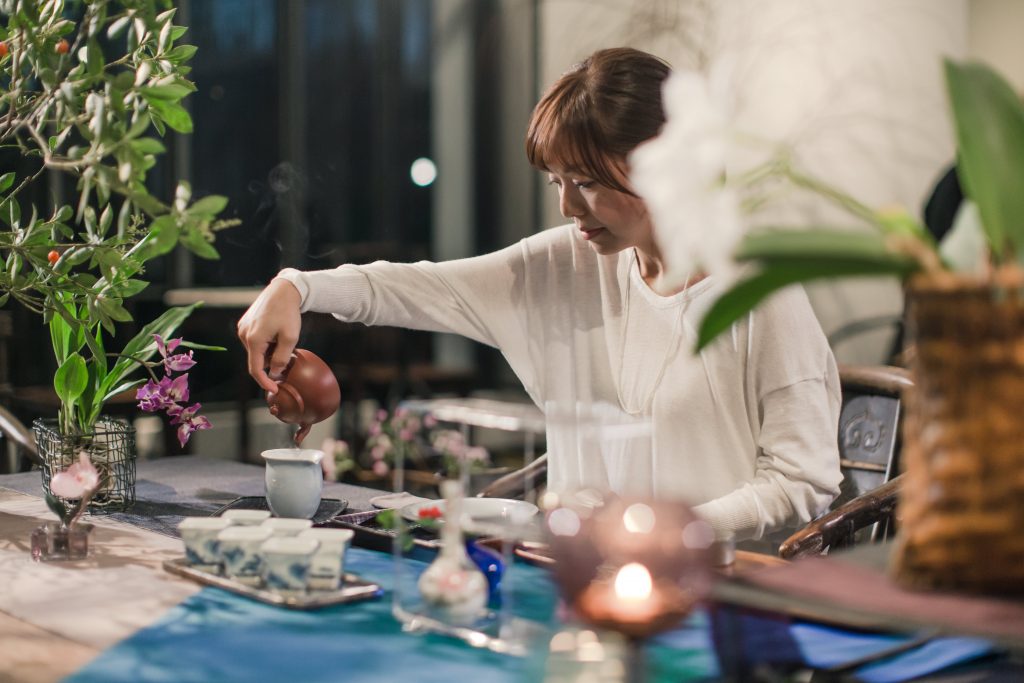

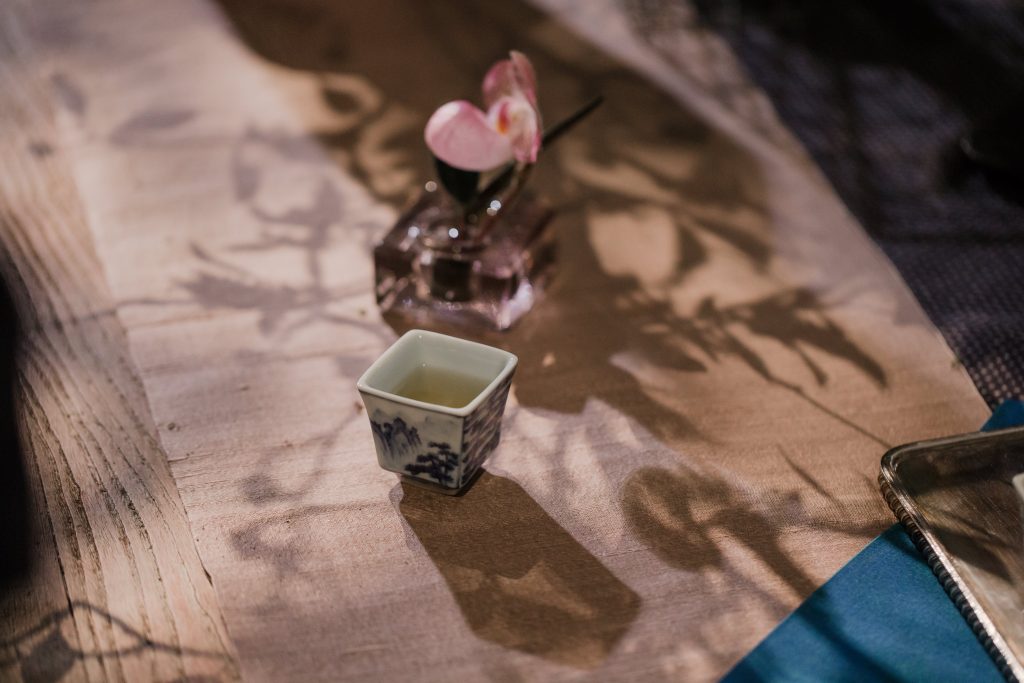
The Sublimity From Traditional Culture Enriches Modern Lives
During the interviews, Master Xie had been photographing her students’ works with elegant movement and smile. Over the last three decades, her main focus has been teaching the Taiwanese Cha Dao, and has guided those who serve tea to open up their senses towards nature while finding comeliness. She claims that it all started with teaching children how to serve tea, and never thought she would end up with adult students. “I wanted to cultivate exquisite etiquettes with kids, just like playing house. I didn’t know what to expect, but I would prepare dainty delectable that are pleasing to the eyes every time, so the kids really look forward to our class. And then I thought, they could be young tea hosts too. So I started training them on how to be a guest, to carry tea wares out, and to clean up tea cups and tea utensils. I only wanted to start teaching kids, from the fundamentals.” Turned out it was the moms who were more eager to learn by watching from the sideline.
And so, Master Xie had started to teach adults with the contents designed for kids, and instructed them on the procedures of brewing tea by watching out for water temperature, tea service, tea tasting and even cleaning up. She was touched that many more people wanted to learn about the way of tea. “I’ve always said that I am only grooming for my own playmates; I don’t have any far ambitions except to ‘just have fun’ with interesting characters. I knew how alluring the world of tea could be; coming from my background of Chinese painting, I find elements in traditional art to be temperamental and nourishing to our modern lifestyle. But how do we transcend the classical aesthetics through time, and continue to draw from the well?” In the generation where things move at lightening speed, ideas are spread by wit. Master Xie on the other hand opt for rigorous routine of classes, to her it’s the way to plant seeds that grow into trees. Together with her tea buddies, they strive for the abundances of life.
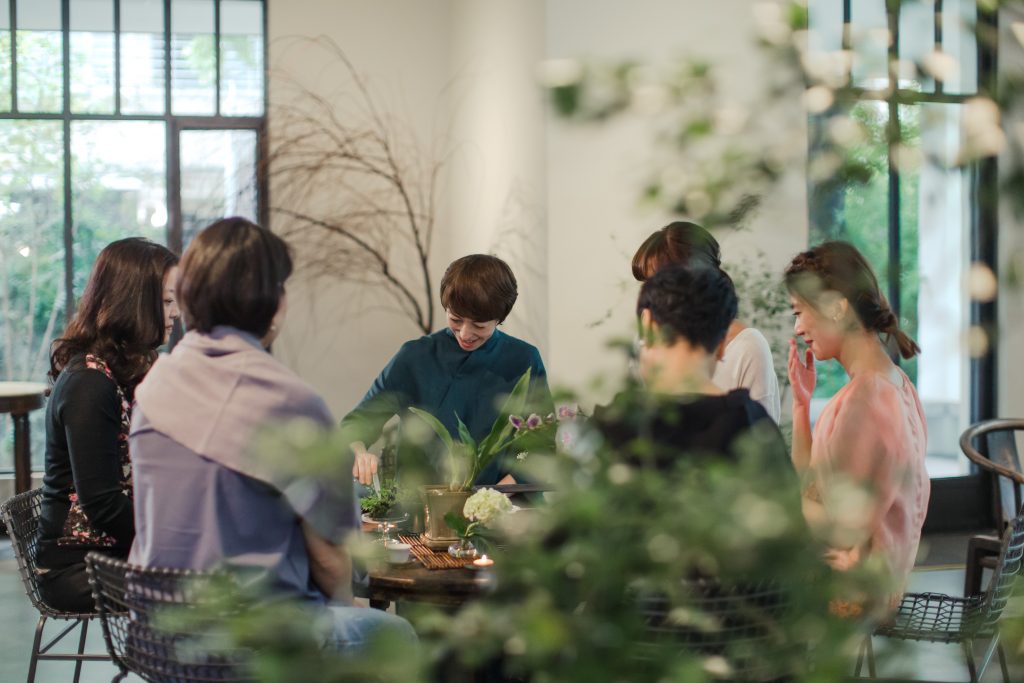
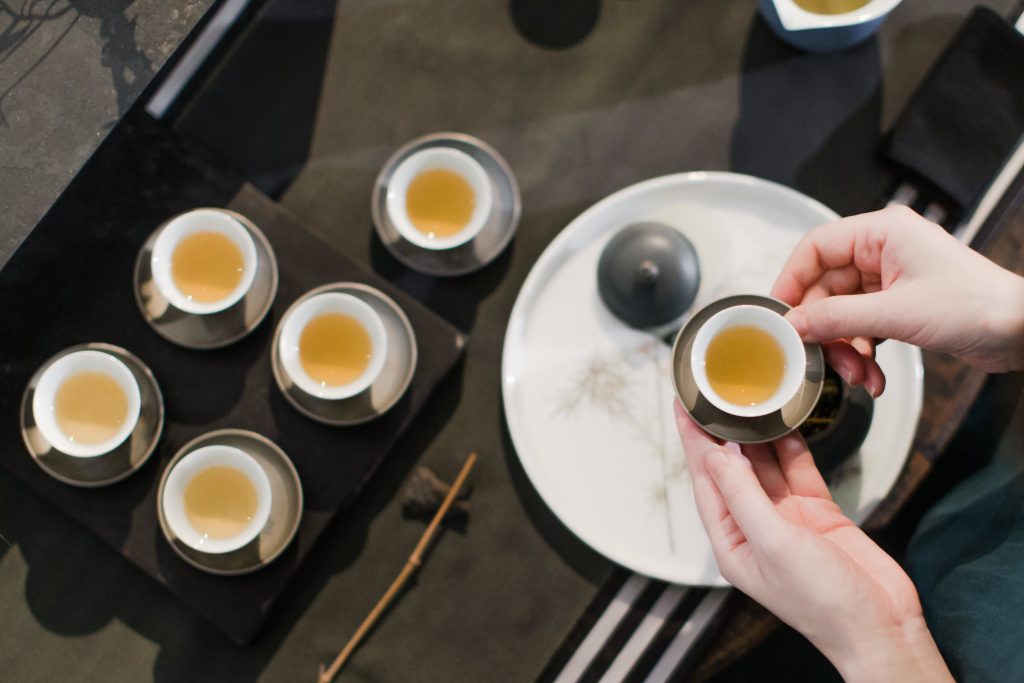
Experiencing the Seven Senses Beyond Taste
Master Xie has long focused on Taiwanese tea; in her mind, tea is not just something that quenches thirst. “Taiwanese teas are finely crafted with regional characters. It is gentile and serene with strong backbone, much like our scenic natural treasures.” She is often asked to define what is a “decent cup of tea?” and usually the answer is a profound one: “To me, tea is like ink calligraphy. When we truly taste, it is as if we can savor the saturation, the melodic temple, and the fluidity of time through its fragrance and flavor. In the process of cooling down, the fragrance and palette go through layers of transformation similar to that of a harmony and chorus in music. .” Although the works planned out for tea tasting through ceremonies seem extensive, but when done for great peers, this charitable notion to create an alternative dimension doesn’t just serve a cup of tea, but also extends a bridge to the world.
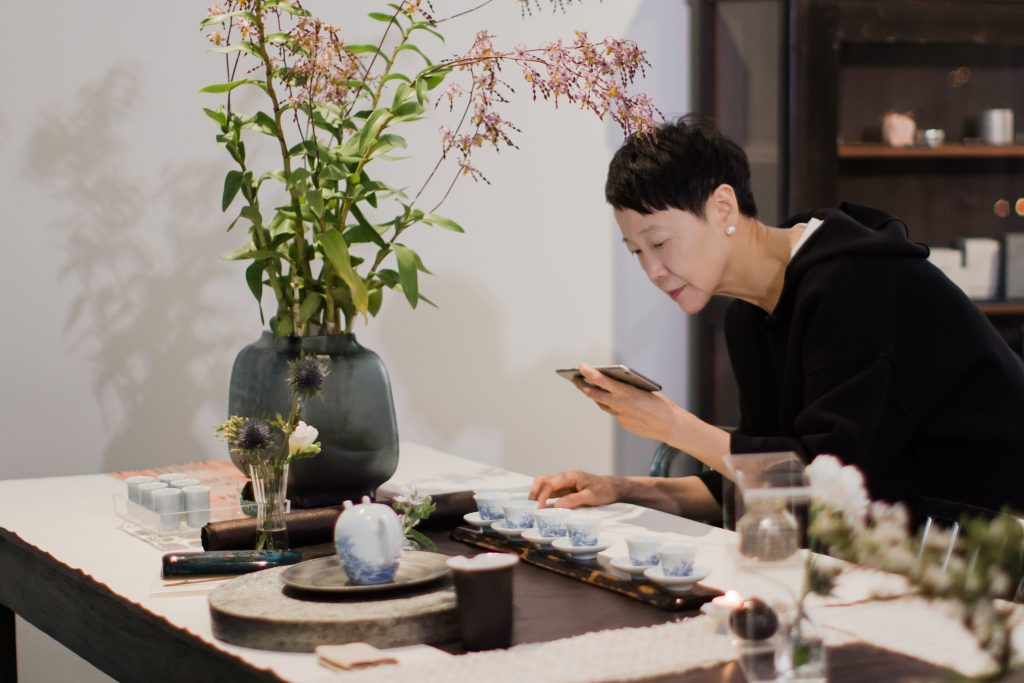
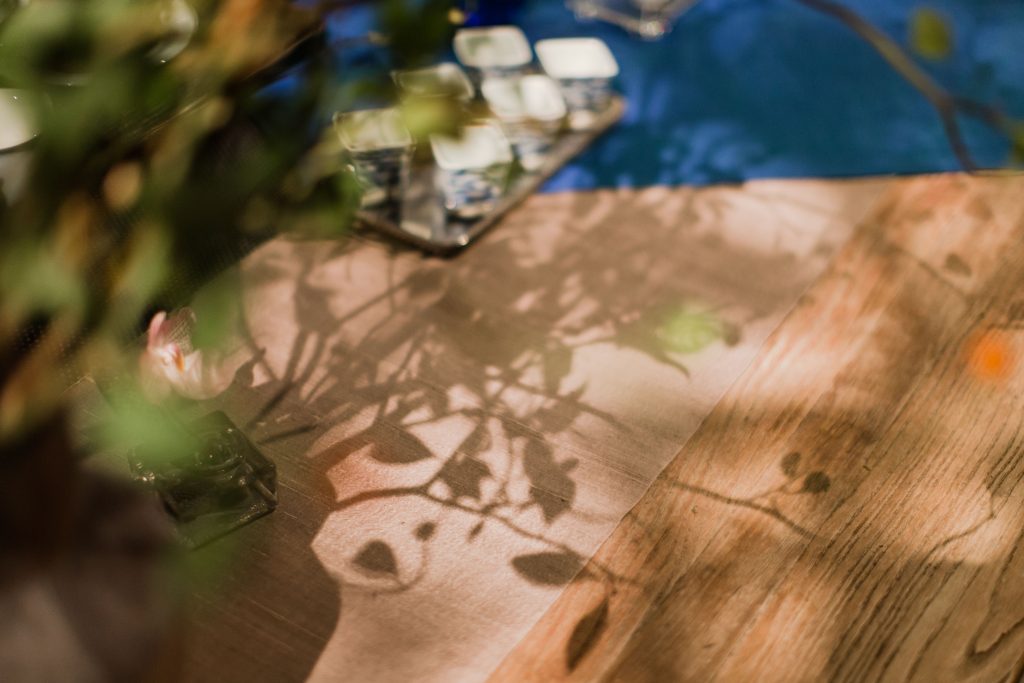

Let Emotions Flow Between Tea And Hearts
There isn’t a set standard for tea, and obtaining fine teas doesn’t guarantee proper brew. To Master Xie, the most precious part of the whole experience is the personal style and emotion that came forward from the distinctive creations of tea ceremonies prepared by her three students. “To receive affection from friends, one must deem oneself content in the first place. So do it for yourself, not others. Only when you are truly at ease with joy, can you have the ability to branch out and share.” When the mood and the crowd is right and you feel at ease, tea will be taste right naturally.
Life is Savored Through Each Brew of Tea
For urban dwellers, the hardest part is making the time to calm the minds, but this has been part of Master Xie’s life for the past decades. When asked how she does it, she reminded us gracefully that even though we seemingly live in our daily routine, but no two days are alike. “It feels like we are drinking with the same crowd of friends, but no two ceremonies are analogical. Don’t you feel that the second round of tea has an upward mobility to it? It has been elevated and it grew. So overtime, we learned to create extra dimension that is spiritual. It resides in our mind and our heart.” With a seed of interest and a multitude of passion, Master Xie hopes that our generation would allow a place for tea to blossom. “I look forward to the rediscovery of tea genre beyond the hustle and bustle of life, and I believe a cup of tea with higher quality and depth can satisfy us even more.” Starting with the basics of brewing tea and clarifying one’s mind along the way, you will perceive a different world as your sensation progresses with it.
